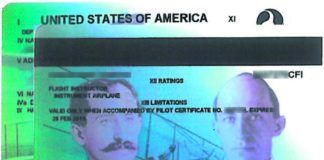What’s In a Route?
In the not-too-distant past, routes were so simple, weren’t they? It seemed like all you had to know was the difference between low-altitude Victor airways, and high-altitude Jet routes. These VOR-based routes shaded in black on enroute charts were joined by blue-shaded RNAV-based routes over a decade ago. Low altitude T-routes, high altitude Q-routes, and low altitude helicopter TK-routes have become quite common, and will likely eventually outnumber VOR-based routes. (Where an RNAV route is co-located with a VOR-based route, it is sometimes called a joint route.)
Although these routes are by far the most common types found within the United States, they aren’t the only ones that you might encounter on a chart. There are still a handful of low/medium-frequency colored airways that can be found in Alaska, south Florida and eastern North Carolina. These NDB-based routes are depicted in brown on enroute charts, and are identified by color. Red and Green routes are generally oriented east and west, while Amber and Blue routes are generally oriented north and south, like the U.S. highway numbering system even and odd highway numbers.
If you plan a flight outside of the United States, you’re likely to encounter even more types of routes. Anyone who has flown IFR to the Bahamas has probably filed a Bahama Route (such as BR63V, spoken as “Bahama Route 63 Victor”), which is part of a system of low-altitude VOR and NDB-based routes that crisscross the Bahamas and connect to the east coast of Florida. Then there are the Puerto Rican local routes (such RTE6, spoken as “Route 6”), which are a system of low-altitude VOR-based routes that crisscross Puerto Rico and the U.S. Virgin Islands.
When flying to other international destinations, you’ll probably be cleared along an Air Traffic Services (ATS) route, which are what enroute airways are called outside of the United States. These are identified by a phonetic character and a numeric identifier, similar to Victor airways. For instance, A555, spoken as “Alpha 555”, begins at Bimini and crosses the Bahamas, Puerto Rico, Martinique, and beyond.
In the not-too-distant future, we may have even more routes to contend with. ADS-B routes are already in use in some areas outside of the United States, and the FAA is currently experimenting with an ADS-B requirement for operation along some offshore oceanic routes connecting New England with the Caribbean.




